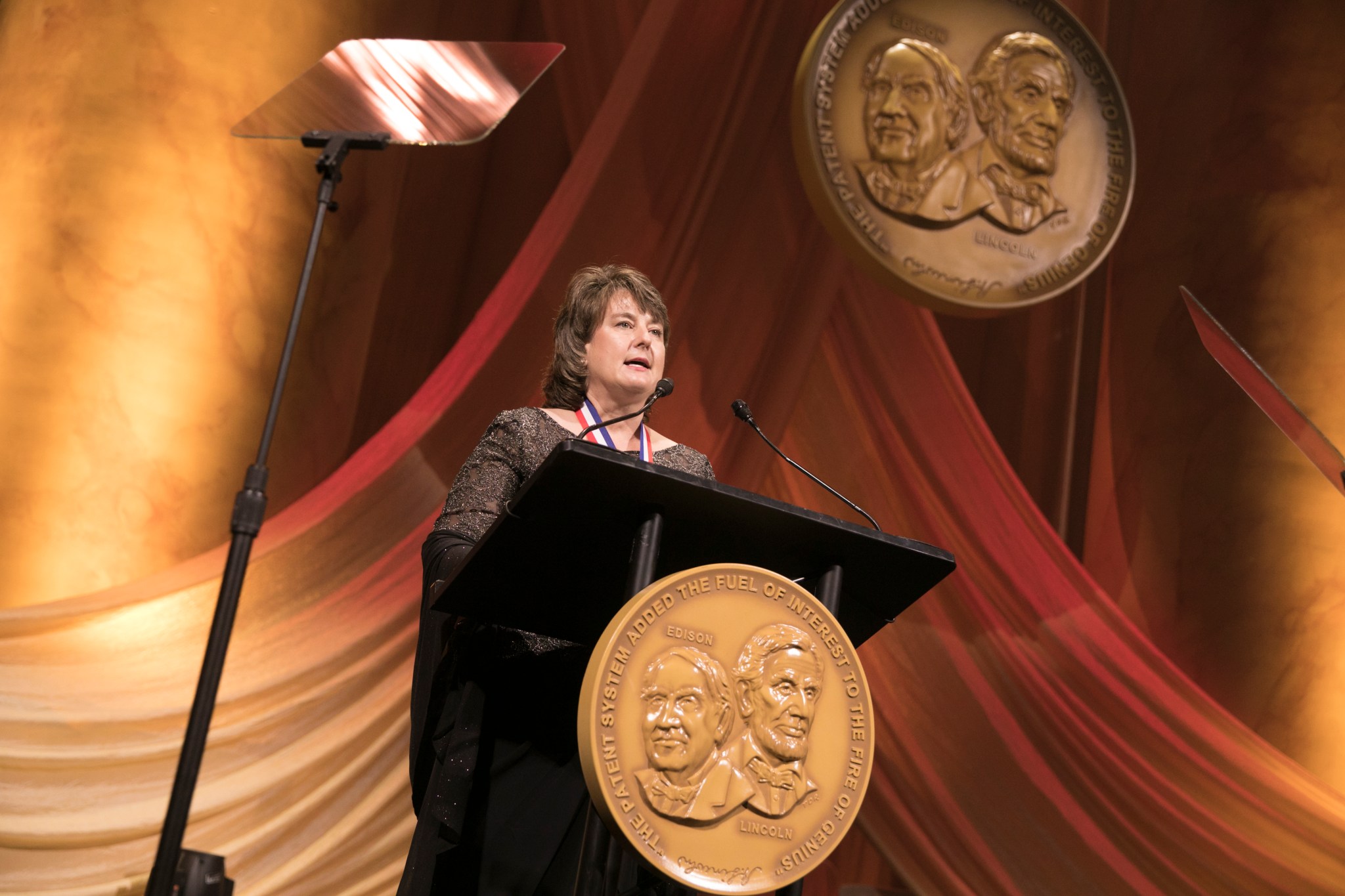By Linda Herridge
NASA’s John F. Kennedy Space Center
Jackie Quinn, an environmental engineer at NASA’s Kennedy Space Center in Florida, was one of just 15 innovators inducted into the National Inventors Hall of Fame (NIHF) Class of 2018. Quinn accepted the award May 3, during the 46th Annual Induction Ceremony at the National Building Museum in Washington.
“The people I met at the NIHF are simply amazing and inspiring,” Quinn said. “It’s a humbling experience to be with them and learn of their contributions to technological advancement.”
In the late 1990’s, Quinn and a group of researchers from the Department of Chemistry at the University of Central Florida co-developed emulsified zero-valent iron (EZVI). The technology is used to combat chlorinated solvent contaminants left over from space exploration’s early years. It has been used nationally and internationally since its development. Quinn’s technology innovation portfolio includes several other cleanup technologies, all targeting environmental contaminants.
“This is a proud moment for Kennedy Space Center,” said Barbara Brown, the center’s chief technologist. “It’s immensely satisfying to see one of our own recognized and celebrated for her hard work and ingenuity. Her inventions, including EZVI, have not only furthered NASA’s mission, they also have benefitted humanity, and it doesn’t get any better than that.”
EZVI provides a method to remove environmental contamination from groundwater in a quick, effective and cost-competitive manner. The technology has been used to decontaminate groundwater supplies in Florida, including at the Kennedy Space Center, Patrick Air Force Base, Cape Canaveral Air Force Station and Port Canaveral, as well as 17 other U.S. states. EZVI also has been used in Australia and France.
According to Lewis Parrish, a senior technology transfer specialist in Kennedy’s Technology Transfer Office, EZVI has been licensed by 12 different companies for commercial use, the most for any licensed NASA technology. The EZVI technology has two issued U.S. patents.
Recently, licensee Toxicological and Environmental Agencies Inc., of Baton Rouge, Louisiana, used EZVI to complete a massive cleanup of contaminated groundwater at a train wreck site in Livingston, about half an hour east of Baton Rouge. Additionally, more than 9,000 gallons of EZVI were used to treat subsurface contaminants near the Reutilization, Recycling and Marketing Facility at Kennedy.
“Through events, exhibits and education programs, the NIHF honors individuals every year whose creativity, ingenuity and ability to overcome obstacles have transformed our world,” said NIHF CEO Michael Olster. “The remarkable innovators in our Class of 2018 have made significant contributions to our lives in fields as varied as biotechnology, internet security, groundwater remediation and wireless technology. They make our lives safer, healthier and more connected.”
The National Inventors Hall of Fame is the premier nonprofit organization in America dedicated to recognizing inventors and inventions, promoting creativity, and advancing the spirit of innovation and entrepreneurship. NIHF was founded in 1973 in partnership with the U.S. Patent and Trademark Office. The organization is a Smithsonian Affiliate. For more information, visit www.invent.org.



























